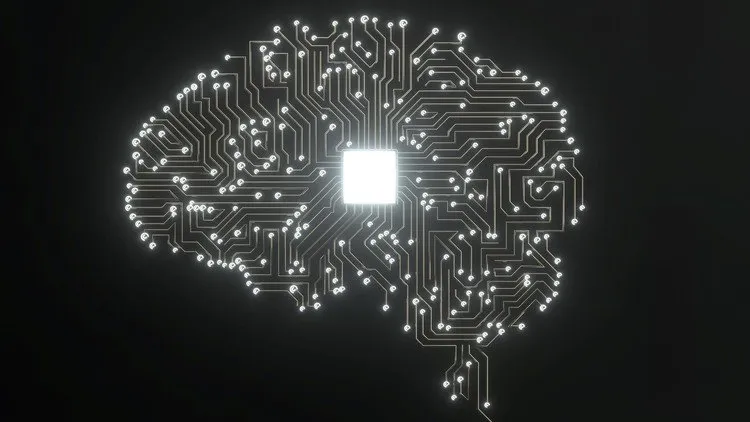Machine Learning and Deep Learning Using TensorFlow
Artificial Intelligence (AI): Machine Learning, Deep Neural Networks (DNN), and Convolution Neural Networks (CNN)

Machine Learning and Deep Learning Using TensorFlow udemy course
Artificial Intelligence (AI): Machine Learning, Deep Neural Networks (DNN), and Convolution Neural Networks (CNN)
What you'll learn:
Machine Deep Learning for Biology with Python and Tensorflow
- Tensorflow allows you to create artificial neural networks.
- Deep learning can be used to classify images, data, and sentiments.
- Learn how to use machine learning techniques to tackle real-world challenges.
- Understanding of the fundamentals of statistics and machine learning ideas.
Requirements:
-
No prior experience is required.
Description:
If you are interested in Machine Learning, Neural Networks, Deep Learning, Deep Neural Networks (DNN), and Convolution Neural Networks (CNN) with an in-depth and clear understanding, then this course is for you.
Topics are explained in detail. Concepts are developed progressively in a step by step manner. I sometimes spent more than 10 minutes discussing a single slide instead of rushing through it. This should help you to be in sync with the material presented and help you better understand it. Machine Learning and Deep Learning Using TensorFlow Udemy
The hands-on examples are selected primarily to make you familiar with some aspects of TensorFlow 2 or other skills that may be very useful if you need to run a large and complex neural network job of your own in the future.
Hand-on examples are available for you to download.
Please watch the first two videos to have a better understanding of the course.
TOPICS COVERED
What is Machine Learning?
Linear Regression
Steps to Calculate the Parameters
Linear Regression-Gradient Descent using Mean Squared Error (MSE) Cost Function
Logistic Regression: Classification
Decision Boundary
Sigmoid Function
Non-Linear Decision Boundary
Logistic Regression: Gradient Descent
Gradient Descent using Mean Squared Error Cost Function
Problems with MSE Cost Function for Logistic Regression
In Search for an Alternative Cost-Function
Entropy and Cross-Entropy
Cross-Entropy: Cost Function for Logistic Regression
Gradient Descent with Cross Entropy Cost Function
Logistic Regression: Multiclass Classification
Introduction to Neural Network
Logical Operators
Modeling Logical Operators using Perceptron(s)
Logical Operators using Combination of Perceptron
Neural Network: More Complex Decision Making
Biological Neuron
What is Neuron? Why Is It Called the Neural Network?
What Is An Image?
My “Math” CAT. Anatomy of an Image
Neural Network: Multiclass Classification
Calculation of Weights of Multilayer Neural Network Using Backpropagation Technique
How to Update the Weights of Hidden Layers using Cross Entropy Cost Function
Hands On
Google Colab. Setup and Mounting Google Drive (Colab)
Deep Neural Network (DNN) Based Image Classification Using Google Colab. & TensorFlow (Colab)
Introduction to Convolution Neural Networks (CNN)
CNN Architecture
Feature Extraction, Filters, Pooling Layer
Hands On
CNN Based Image Classification Using Google Colab & TensorFlow (Colab)
Methods to Address Overfitting and Underfitting Problems
Regularization, Data Augmentation, Dropout, Early Stopping
Hands On
Diabetes prediction model development (Colab)
Fixing problems using Regularization, Dropout, and Early Stopping (Colab)
Hands On: Various Topics
Saving Weights and Loading the Saved Weights (Colab)
How To Split a Long Run Into Multiple Smaller Runs
Functional API and Transfer Learning (Colab)
How to Extract the Output From an Intermediate Layer of an Existing Model (Colab), and add additional layers to it to build a new model.
Who this course is for:
- Who is this course for? Almost for everyone. Machine Learning is not a topic for one single profession. Machine Learning (along with neural networks) is an immensely powerful tool that may help you to find solutions to some of the problems that one may not know how to solve otherwise. Try this course and see if it gives you better insight to address some of the problems you are working on.
- People from a diverse range of professions may find this knowledge useful in their own profession.
- Topics are explained in detail. Concepts are developed progressively in a step by step manner. I sometimes spent more than 10 minutes discussing a single slide instead of rushing through it. This should help you to be in sync with the material presented and help you better understand it.
- The hands-on examples are selected primarily to make you familiar with some aspects of TensorFlow 2 or other skills that may be very useful if you need to run a large and complex neural network job of your own in the future.
- Please watch the first two videos to have a better understanding of the course.
- After Effects Cc – Video Transition Advanced training course
- Build a Video Conference App from Scratch with PHP + WebRTC
- PowerPoint Presentations: Deliver a Non-Boring Presentation
- Master DAX fundamentals : Power BI, Power Pivot & SSAS
Course Details:
- 10 hours on-demand video
- 1 article
- 4 downloadable resources
- Full lifetime access
- Access on mobile and TV
- Certificate of completion
Machine Learning and Deep Learning Using TensorFlow udemy free download
Artificial Intelligence (AI): Machine Learning, Deep Neural Networks (DNN), and Convolution Neural Networks (CNN)
Demo Link: https://www.udemy.com/course/machine-learning-and-deep-learning-using-tensorflow/

